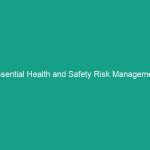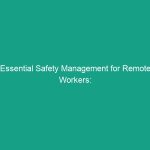Good Morning Team!
Today, we are going to talk about a crucial aspect of our Workplace Safety: Essential Competency-Based Training. The purpose of this Toolbox Talk is to ensure that each of you has the vital skills needed to perform your tasks safely and effectively. This training is not just a checkbox for compliance; it’s a fundamental part of our commitment to keeping everyone safe on the job.
Understanding Essential Competency-Based Training
Essential Competency-Based Training refers to training programs specifically designed to ensure that employees possess the critical skills and knowledge required for their roles, particularly in the context of health, safety, and environmental (HSE) performance. This type of training is vital because it directly impacts our ability to perform work safely, reducing the likelihood of accidents and enhancing our overall productivity.
Many employees might think that training is merely a formality or a requirement to be fulfilled. However, this perception is a misconception. In reality, competency-based training can empower you to make informed decisions and take appropriate actions in various situations, ultimately fostering a safer work Environment.
Key Hazards, Risks, and Safety Considerations
Understanding the Hazards associated with your work is crucial. Competency-based training addresses specific risks you might face in your job. These can include:
- Equipment Operation failures
- Improper handling of hazardous materials
- Inadequate emergency response
- Failure to follow proper Procedures
Ignoring training can lead to severe consequences, including workplace injuries, costly downtime, or even legal repercussions. For instance, consider a scenario where an operator does not fully understand how to handle machinery. This lack of competency can result in equipment malfunction, potentially causing harm to the operator and their coworkers.
Best Practices, Procedures, & Actionable Advice
To ensure you and your colleagues are equipped with the necessary skills, here are some Best Practices:
1. Regular Training Sessions
Participate in regular training sessions designed to refresh your skills and introduce new protocols. These sessions should be interactive and include hands-on practice whenever possible.
2. Utilize Checklists
Incorporate checklists into your daily routines. Checklists are effective tools that can help ensure that all Safety protocols are followed. They serve as reminders of the essential steps needed to complete tasks safely.
3. Encourage Peer Learning
Engage in peer learning opportunities. Sharing knowledge among colleagues can reinforce your understanding and help others learn from your experiences. Discussing safety challenges and solutions can foster a culture of safety.
4. Real-World Application
For instance, if a new safety procedure is implemented, conduct a walkthrough of the process. This practical application will allow you to ask questions and clarify any uncertainties.
Regulations, Standards, and Compliance
It’s important to be aware of the Regulations and Standards that govern our industry. Organizations like OSHA (Occupational Safety and Health Administration) and ISO (International Organization for Standardization) set standards that help ensure Workplace Safety. Compliance with these standards not only protects you but also helps our organization avoid penalties and maintain a good reputation.
Understanding the regulations is a part of your competency training. It’s essential to know what is required of you and how to uphold these standards in your daily work.
Employee Engagement & Discussion
Now, let’s open up the floor for discussion. I’d like to hear from you:
- What safety challenges have you encountered related to your work tasks?
- How can competency training be improved in our workplace?
- What additional resources would help you feel more confident in your role?
Your feedback is invaluable. Engaging in these discussions not only helps us improve our training programs but also fosters a sense of community and shared responsibility for safety.
Conclusion & Key Takeaways
In conclusion, Essential Competency-Based Training is crucial for ensuring that all employees have the vital skills necessary for performing their jobs safely. Remember the key points we discussed:
- Regular training sessions are essential.
- Utilizing checklists can help maintain safety protocols.
- Encouraging peer learning strengthens our safety culture.
- Compliance with regulations protects us all.
Let’s commit to making safety our top priority. Thank you all for your attention and for your commitment to maintaining a safe working environment. Together, we can ensure that everyone goes home safely at the end of each day.


